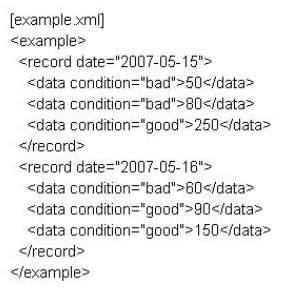At ValidExamDumps, we consistently monitor updates to the XML I10-003 exam questions by XML. Whenever our team identifies changes in the exam questions,exam objectives, exam focus areas or in exam requirements, We immediately update our exam questions for both PDF and online practice exams. This commitment ensures our customers always have access to the most current and accurate questions. By preparing with these actual questions, our customers can successfully pass the XML Master Professional Database Administrator exam on their first attempt without needing additional materials or study guides.
Other certification materials providers often include outdated or removed questions by XML in their XML I10-003 exam. These outdated questions lead to customers failing their XML Master Professional Database Administrator exam. In contrast, we ensure our questions bank includes only precise and up-to-date questions, guaranteeing their presence in your actual exam. Our main priority is your success in the XML I10-003 exam, not profiting from selling obsolete exam questions in PDF or Online Practice Test.
See separate windows.
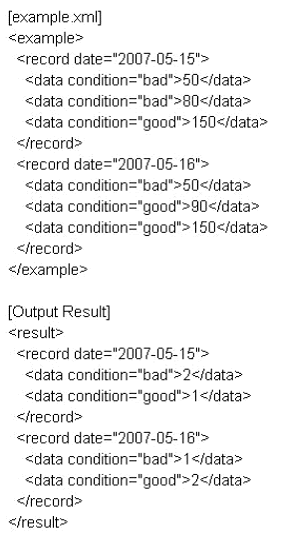
Assume you wish to execute an XQuery on [example.xml] (separate window) to obtain [Output Result] (separate window).
Select the correct XQuery to obtain [Output Result],
Each data element of [Output Result] shows the number of data elements for each [example xml] record element having an attribute value equivalent to the condition attribute value.
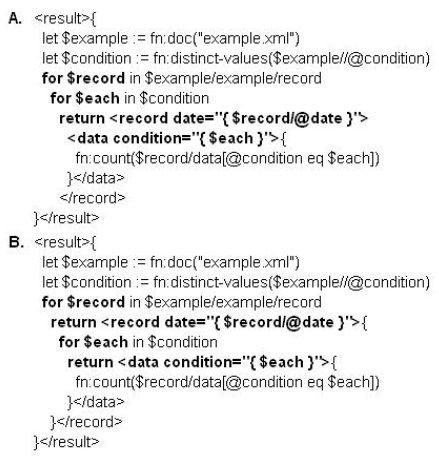
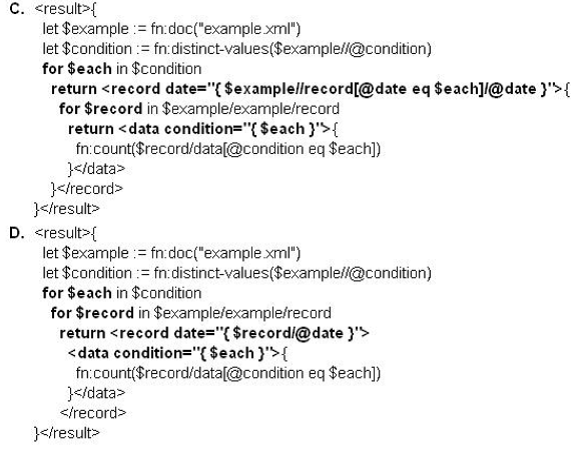
Assume the use of XML Data like [XML Data] referenced in a separate window. When a data element is present in XML Data, there are three possibilities for b element as shown in [XML Data b Element] (separate window). No other possibilities are available.
Consider inserting any XML data into an XMLDB using the methods shown in [Operation 1] or [Operation 2].
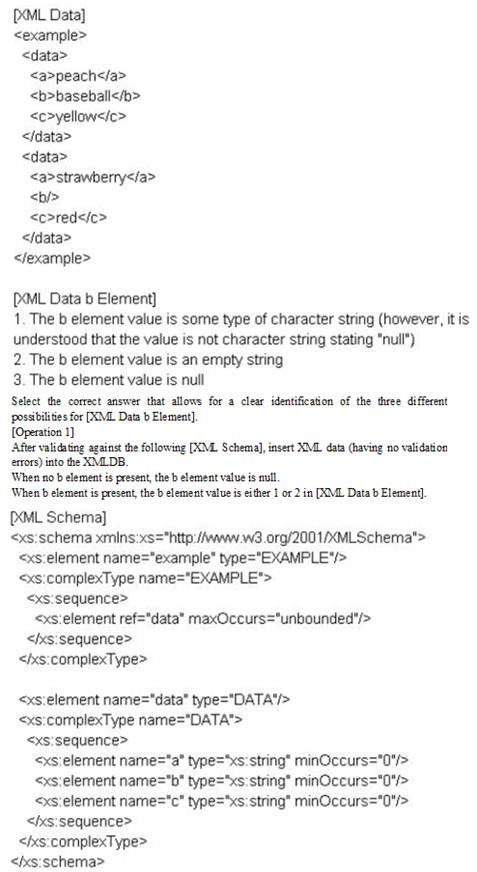
[Operation 2]
After validating against the following [DTD], insert XML data (having no validation errors) into the XMLDB (do not consider the existence of a document type declaration in the XML data).
When the b element value is "null", the value of the b element is null.
When the b element value is a character string other than "null", the b element value is 1 in [XML Data b Element].
When the b element is an empty element, the b element value is 2 in [XML Data b Element].
[DTD]
Select the correct result of executing the [XOuery] on [example xml] referenced in a separate window.
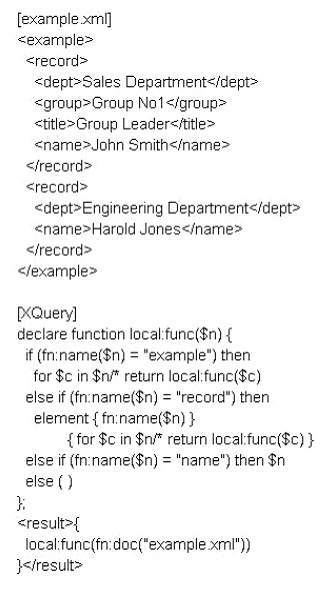
An [XQuery] was executed to join [eventList.xml] and [sessionUst.xml] (referenced in a separate window) and obtain the following [Expected Execution Result].
However, executing this [XQuery] resulted in an error.
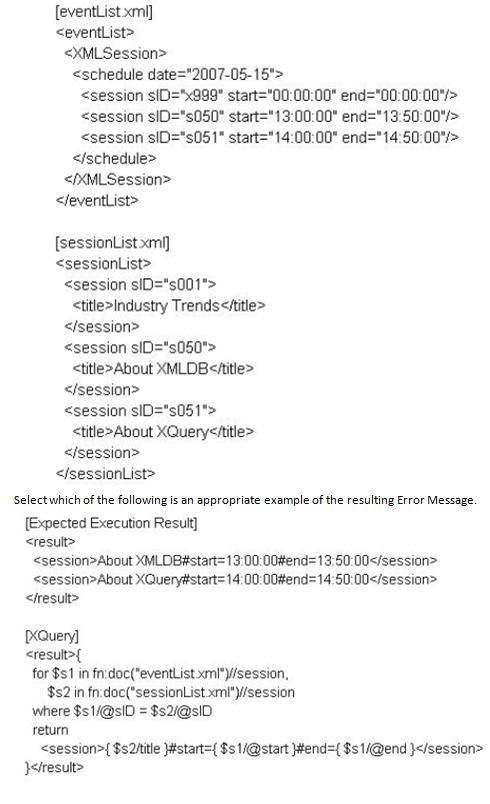
Select the correct result of executing the following [XQuery] on [example xml] referenced in a separate window.
[XQuery]
for $record in fn:doc("example.xml")/example/record
return
}
